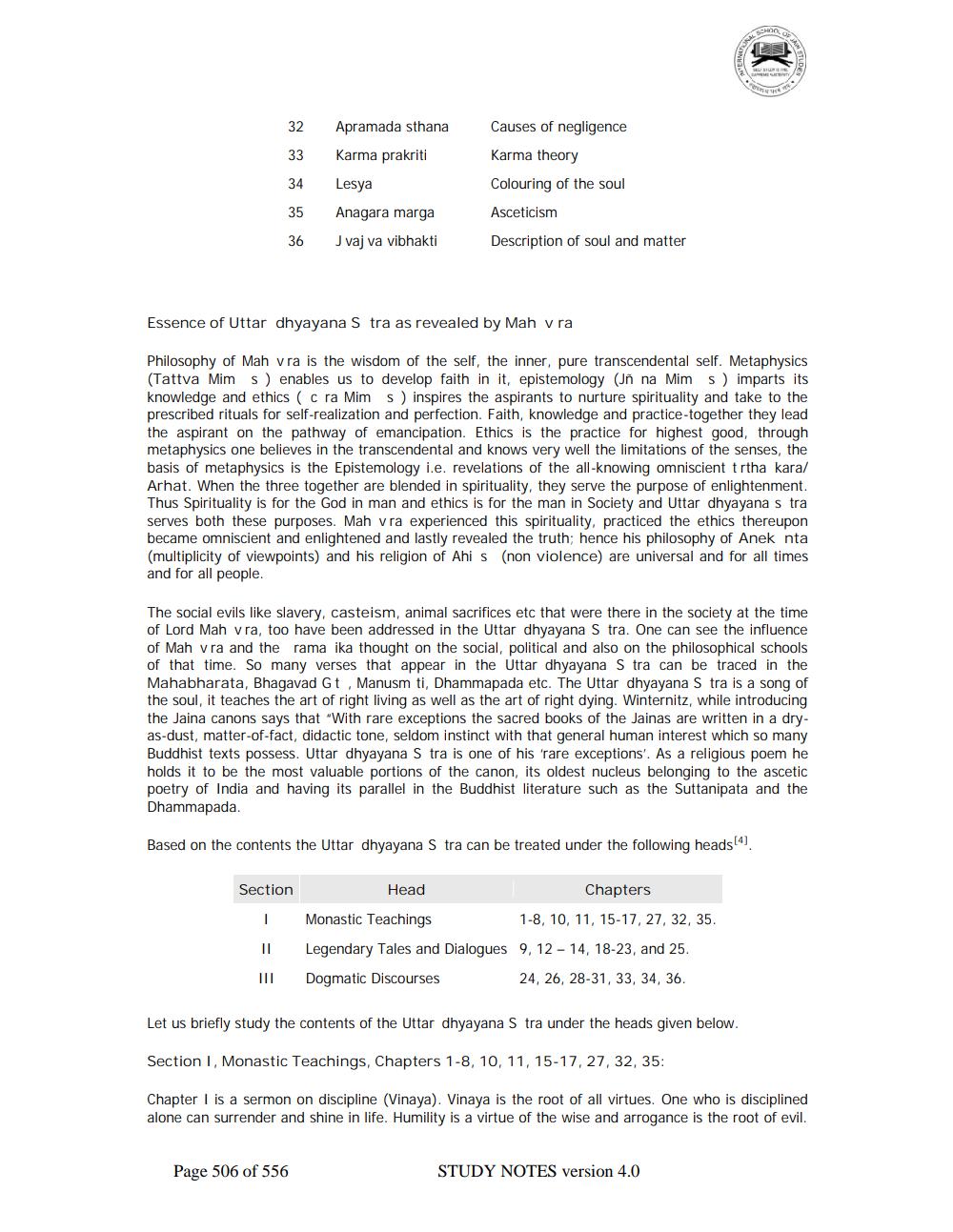________________
Apramada sthana Karma prakriti Lesya Anagara marga J vaj va vibhakti
Causes of negligence Karma theory Colouring of the soul Asceticism
35
36
Description of soul and matter
Essence of Uttar dhyayana S tra as revealed by Mah v ra
Philosophy of Mah vra is the wisdom of the self, the inner, pure transcendental self. Metaphysics (Tattva Mim s ) enables us to develop faith in it, epistemology (In na Mim S) imparts its knowledge and ethics ( c ra Mim s ) inspires the aspirants to nurture spirituality and take to the prescribed rituals for self-realization and perfection. Faith, knowledge and practice-together they lead the aspirant on the pathway of emancipation. Ethics is the practice for highest good, through metaphysics one believes in the transcendental and knows very well the limitations of the senses, the basis of metaphysics is the Epistemology i.e. revelations of the all-knowing omniscient trtha kara/ Arhat. When the three together are blended in spirituality, they serve the purpose of enlightenment. Thus Spirituality is for the God in man and ethics is for the man in Society and Uttar dhyayana s tra serves both these purposes. Mah vra experienced this spirituality, practiced the ethics thereupon became omniscient and enlightened and lastly revealed the truth; hence his philosophy of Anek nta (multiplicity of viewpoints) and his religion of Ahi s (non violence) are universal and for all times and for all people.
The social evils like slavery, casteism, animal sacrifices etc that were there in the society at the time of Lord Mah v ra, too have been addressed in the Uttar dhyayana S tra. One can see the influence of Mah vra and the rama ika thought on the social, political and also on the philosophical schools of that time. So many verses that appear in the Uttar dhyayana S tra can be traced in the Mahabharata, Bhagavad Gt , Manusm ti, Dhammapada etc. The Uttar dhyayana S tra is a song of the soul, it teaches the art of right living as well as the art of right dying. Winternitz, while introducing the Jaina canons says that "With rare exceptions the sacred books of the Jainas are written in a dryas-dust, matter-of-fact, didactic tone, seldom instinct with that general human interest which so many Buddhist texts possess. Uttar dhyayana S tra is one of his 'rare exceptions'. As a religious poem he holds it to be the most valuable portions of the canon, its oldest nucleus belonging to the ascetic poetry of India and having its parallel in the Buddhist literature such as the Suttanipata and the Dhammapada.
Based on the contents the Uttar dhyayana S tra can be treated under the following heads
Section
Head
Chapters Monastic Teachings
1-8, 10, 11, 15-17, 27, 32, 35. Legendary Tales and Dialogues 9.12 - 14, 18-23, and 25. Dogmatic Discourses
24, 26, 28-31, 33, 34, 36.
III
Let us briefly study the contents of the Uttar dhyayana S tra under the heads given below.
Section 1, Monastic Teachings, Chapters 1-8, 10, 11, 15-17, 27, 32, 35:
Chapter 1 is a sermon on discipline (Vinaya). Vinaya is the root of all virtues. One who is disciplined alone can surrender and shine in life. Humility is a virtue of the wise and arrogance is the root of evil.
Page 506 of 556
STUDY NOTES version 4.0




